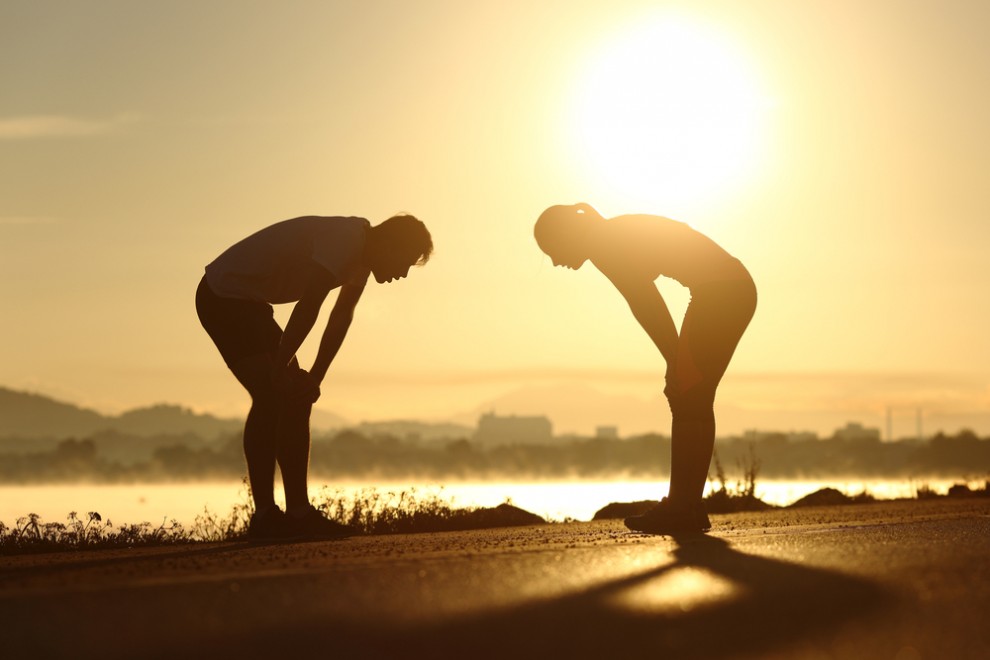
With the intense heat wave we’ve just endured in Southern Ontario, those brave enough to work out in the scorching heat this past week may just have given themselves a fitness advantage.
It’s called heat training and yes, it is a thing. Heat training is one of many tools athletes use to raise their cardiovascular fitness and give them a competitive edge.
Heat training goes hand in hand with heat acclimation. All of our bodies naturally acclimate to the climates we’re living in, whether hot or cold, high altitude or low altitude.
Do you ever wonder why the some of the most elite marathon runners in the world come from a very specific part of central Africa? Kenya and Ethiopia produce some of the most amazing and record-breaking long-distance runners in the world because those athletes train at high altitudes, which increases their cardiovascular ability during endurance events. There are a number of other important factors at play postulating why Kenyan and Ethiopian athletes are exceptional distance runners, including diet, genetics and lifestyle, but altitude training is something many runners specifically seek out.
They train for several weeks at altitudes higher than 2,500 meters above sea level and, according to studies, end up increasing blood mass and hemoglobin (the red blood cells that carry oxygen).
However, there is some debate among exercise physiologists on whether or not altitude training actually improves performance.
Some exercise physiologists say heat training can achieve similar results to altitude training.
Running or exercising in the heat has many benefits, according to scientists, and can make you a better and faster runner.
Yes, you will run slower in the heat. Not many runners are breaking personal records in intense heat. You will run slower because your body is working harder to maintain a normal internal temperature.
But running in the heat makes your body run better in cooler weather. During heat training, your body is undergoing physiological adaptations to work with less oxygen.
Some general math for running in the heat goes like this: for every 10 degree increase in the air temperature above 55 F, there is a 1.5 per cent to 3 per cent increase in the average finishing time for a marathon. In other words, a runner will finish a marathon with an extra three to six minutes on their best time for every 10 degree increase in air temperature.
Blood plasma plays an important role in cooling your body down. Also consider that you’re losing extra water through an increased sweat rate in the heat, and subsequently, being dehydrated. In addition, you’ll have an increased heart rate and reduced blood flow to the muscles from lack of water in the body. All of this means you’re going to run slower in the heat.
When you sweat, you lose blood volume and less oxygen-rich blood is getting to your muscles. As it gets hotter outside, your body sweats more to cool itself down and that sweat is coming from blood reaching your skin to evaporate into sweat, instead of going to your muscles.
But there’s a bright side to all this. Your body is adapting to the heat through its internal cooling system via perspiration. Your perspiration and cooling system adapts and runners who have adapted to the heat have increased blood plasma levels, which means more oxygen-rich blood is heading to the muscles where it belongs.
In other words, you sweat more when you’re in good physical condition, and your heart decreases during your workouts after about one to two weeks of heat training.
Still, the best way to approach heat training or exercising in the heat is not to go all out with max effort, but to maintain a slow and steady pace and try to increase pace at the end of your run or workout.
When the cooler weather comes, your body will feel less effort (running will feel easier) when you’re running at the same pace you did in the heat and you may even break some personal records.
Note: Make sure you consult a sports doctor or exercise physiologist before beginning any type of workout, including exercising in the heat!






